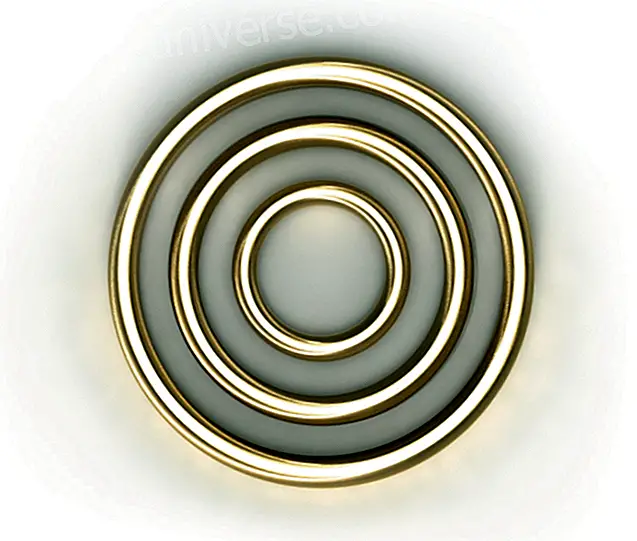 What is a dome? A dome is a domed monolithic structure, that is, built in one piece. A reinforced cement structure with a very high level of insulation that is used to build single-family homes, condominiums, schools, nurseries, sports centers, silos, warehouses, churches, offices, libraries, etc.
What is a dome? A dome is a domed monolithic structure, that is, built in one piece. A reinforced cement structure with a very high level of insulation that is used to build single-family homes, condominiums, schools, nurseries, sports centers, silos, warehouses, churches, offices, libraries, etc.
In the construction process a new technology is used based on the use of inflatable formwork, made with shapes and sizes that precisely fit the construction plans.
The domes are fascinating structures . With the combination of design, materials and the construction process, the domes have outstanding benefits such as:
· A monolithic reinforced concrete dome is probably the strongest building that can be built with a specific amount of time and materials. This means a high resistance to the forces of nature, such as floods, fires, earthquakes, hurricanes or tornadoes.
· With a uniform layer of polyurethane foam used as an insulator and located between the reinforced cement and the outer membrane that acts as a vapor barrier, the dome becomes one of the most energy efficient buildings in the world. A saving of 50% or higher in energy costs is easily obtained in relation to traditional construction.
· The domes can be very large and completely transparent. They do not require columns or supports that can complicate your interior design.
· The domes are built very quickly and economically.
· They have a great longevity and very low maintenance due to the materials with which they are built.
Although the first domes with inflatable formwork were built in the USA. More than 30 years ago as warehouses for potatoes and granaries, the first homes soon emerged due to the exceptional advantages of the domes.
The shape of a dome covers a larger area using less material than any other type of conventional building. Upon entering a dome there is a surprise effect because the interior is perceived much wider than we imagined from the outside. This is because curved shapes and high ceilings predominate and we are used to inhabiting square houses where 90º corners predominate . Nor are we used to having an abundance of natural light creeping through windows and skylights.
Domes can be built in virtually any shape and size we can imagine. The design possibilities are unlimited. The openings in the structure can be up to 40% of the total area. The house can be large or small, be made of a single Dome or several connected, it can be one or several floors, it can be simple or spectacular, and can adapt to any type of landscape.
Advantages of Domes : These are some of the advantages offered by domes
1. Lower initial costs: under certain conditions, domes can cost significantly less, compared to traditional construction. In almost all cases you save if the interiors are designed properly, radially. The greatest savings occur in large stores, such as gyms, libraries, coffee shops, auditoriums, theaters, etc.
2. Energy efficiency, long-term savings: the inherent thermal mass of the domes, as well as the resistance to penetration of passive insulation heat, produces energy savings of up to 50% compared to the current construction. See note
3. Low maintenance, long durability: a one-piece reinforced concrete building can endure centuries without degrading, cracking or material loss. For owners of a dome, public or industrial buildings, such as silos, low maintenance is a significant advantage.
4. A unique form, a new style: the dome is a vaulted structure of antiquity that is finding new acceptance. It has a unique style exalted and enlarged by modern construction methods.
5. Incombustibility: Recent cases show that reinforced cement domes are made fireproof, do not propagate it and cannot collapse due to heat. In addition, the polyurethane foam used as insulation is self-extinguishing.
6. High security: the inherent strength of the walls and reinforced concrete roof of a dome make it impregnable, like a bunker.
7. Reproduction of celestial motifs: due to the domed shape of the domes you can reproduce the sky or the stars, this makes them ideal for theme parks, churches or planetariums.
 8. Buried building: with the resistance of the inflatable formwork acting as a vapor barrier, and the resistance of the reinforced concrete to compression, the domes can be built and buried or semi-buried, without being affected by sudden changes in temperature or humidity.
8. Buried building: with the resistance of the inflatable formwork acting as a vapor barrier, and the resistance of the reinforced concrete to compression, the domes can be built and buried or semi-buried, without being affected by sudden changes in temperature or humidity.
9. Strength to hang structures inside: the roof and walls of a dome can safely tolerate hanging structures, such as balconies, mezzanines, cranes, etc.
10. Almost absolute protection: from tornadoes and hurricanes, winds of up to 300 km / h or more have little impact on a basic vault, and since the dome is monolithic, parts of it will not be detached.
11. Construction in remote locations, availability of materials : simple methods of construction and the availability of basic materials make the construction of domes in remote areas relatively easy. Easy and fast. Domes have been built all over the world, from deserts to Alaska.
12. Atmospheric alternation: the domes can be pressurized and used as biological storage rooms or refrigerated chambers, with great savings in the energy bill.
13. Construction with frost or very low temperature : the adverse time that a construction usually delays has less effect when building a dome, since most of the work occurs inside the inflatable formwork or balloon.
14. Radial circulation pattern: in schools, circular patterns eliminate the aisles; in theaters and churches they allow greater number of seats and better visibility.
15. Open-plan interiors: there is currently the technology to make domes of up to 10, 000 m2, without problem.
16. Seismic resistance: its symmetrical and monolithic form give domes the possibility of resisting earthquakes.
17. Economy in silos and warehouses: domes have the ability and strength to store large volumes of materials.
18. Lower insurance rates: because a dome is practically indestructible, it can be secured at a lower price.
Domes are not a mass product. Everyone doesn't like them because they are different, and many people still remain anchored in tradition and convention without even considering them. For them, a Dome will never be their dream home. But there is another select group of owners responsible for a gradual but growing rethinking of what a dream home should be. This new approach is based on the added value that a Dome provides, including design.
How much does a Dome house cost? When talking about price, it is convenient to make a distinction. On the one hand we have the initial construction cost, and on the other the permanent maintenance cost.
As in large industrial domes, and even in large schools or sports centers, the cost of construction of the Dome means considerable savings compared to conventional constructions of similar size, when we talk about a residence we must think that the Dome costs about the same as conventional housing.
 But comparing only the cost of construction without considering other factors involved is not realistic:
But comparing only the cost of construction without considering other factors involved is not realistic:
* The strength and durability of the materials used in a conventional home do not have much to do with a monolithic reinforced concrete dome. If you try to build a dome (for the architectural advantages it offers) without using an inflatable formwork, the price would skyrocket.
* The construction times of the Domes are shorter and much more precise than in a traditional home, where delays often occur that mean an increase in the budget. The construction of a dome is not affected by inclement weather.
ALREADY LONG TERM the permanent cost of maintenance of the Dome is much lower for several reasons:
* It has the best insulation in the market, so there is a saving of 50% or more in both heating and air conditioning.
* Being the fireproof dome, using very solid materials and not being affected by termites, you can negotiate better rates on home insurance.
Bioconstruction, natural construction, domes






